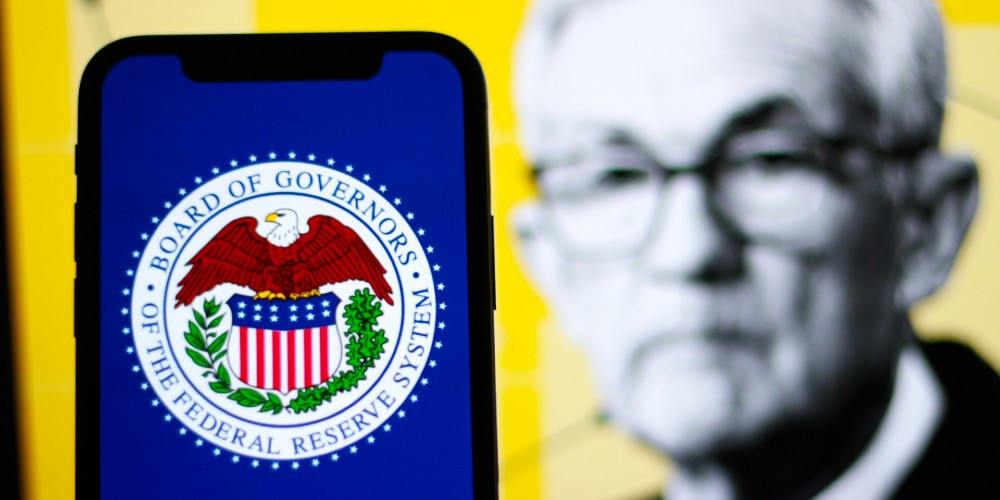(The Epoch Times)—The Federal Reserve anticipates that interest rate cuts will be implemented gradually, according to recently released minutes from the November 6–7 meeting of the policy-making Federal Open Market Committee (FOMC).
At that meeting, FOMC members overwhelmingly voted to lower the federal funds rate by 25 basis points, to a new range of 4.5–4.75 percent, signaling further loosening of restrictive monetary policy.
The meeting summary indicated that officials are confident that inflation is moving sustainably toward the institution’s objective of 2 percent. The Fed could rapidly ease policy if there were sudden weakness in the labor market or the broader economy, the document said.
“In discussing the outlook for monetary policy, participants anticipated that if the data came in about as expected, with inflation continuing to move down sustainably to 2 percent and the economy remaining near maximum employment, it would likely be appropriate to move gradually toward a more neutral stance of policy over time,” the minutes stated.
Meeting participants did express uncertainty regarding how low interest rates need to be before touching the neutral rate that neither stimulates economic activity nor halts growth.
“Many participants observed that uncertainties concerning the level of the neutral rate of interest complicated the assessment of the degree of restrictiveness of monetary policy and, in their view, made it appropriate to reduce policy restraint gradually,” the minutes said.
Looking ahead, Fed policymakers said that incoming data are consistent with the central bank’s 2 percent inflation target. They noted that higher shelter costs bolstered recent higher readings.
“Participants cited various factors likely to put continuing downward pressure on inflation, including waning business pricing power, the committee’s still-restrictive monetary policy stance, and well-anchored longer-term inflation expectations,” it added.
Fed Chair Jerome Powell told reporters at the post-meeting press conference earlier this month that the road to 2 percent inflation may be “bumpy” with more bumps in the road.
As for the U.S. economic landscape, participants concluded that downside risks to the labor market and wider economy decreased.
In addition, staff projected that economic conditions would remain solid and growth projections would be higher than in the previous assessment.
Tim Barkin, president of the Federal Reserve Bank of Richmond, recently expressed caution over the labor market but was optimistic about inflation.
“The labor market might be fine, or it might continue to weaken,” Barkin said in prepared remarks to the Baltimore Together Summit on Nov. 12.
“Inflation might be coming under control, or the level of core might give a signal that it risks getting stuck above target.”
Market Reaction
Financial markets registered tepid gains toward the closing bell on Nov. 26, with the leading benchmark indexes up by as much as 0.4 percent.
Yields in the U.S. Treasury market attempted to reverse the previous session’s sharp decline. The benchmark 10-year yield topped 4.3 percent. The two-year yield was flat at 2.5 percent, while the 30-year bond surged to 4.48 percent.
The greenback extended its gains. The U.S. dollar index, a gauge of the greenback against a basket of currencies, recorded a modest increase and added to its year-to-date rally of 5.6 percent.
Policy minutes did little to change the market’s assessment of next month’s outcome.
- Preserve your retirement with physical precious metals. Receive your free gold guide from Genesis Precious Metals to learn how.
“The minutes did nothing to alter my view that the policy rate is going to be adjusted lower next week and will continue to do so through the next calendar year,” Jamie Cox, managing partner for the Harris Financial Group, said in a note emailed to The Epoch Times.
According to the CME FedWatch Tool, investors are mostly penciling in a quarter-point rate cut.
The rate-cutting cycle will persist throughout 2025, though Fed easing might not be as aggressive, says Jeffrey Roach, the chief economist at LPL Financial.
“In our view, after weeks of markets pricing in too many rate cuts throughout 2025, Fed rate cut pricing is now better aligned with economic data,” Roach said in a note emailed to The Epoch Times. “Currently, markets still expect the Fed to cut rates below 4 percent by the end of 2025.”
The FOMC will hold its next two-day policy meeting on Dec. 16–17.
What Would You Do If Pharmacies Couldn’t Provide You With Crucial Medications or Antibiotics?
The medication supply chain from China and India is more fragile than ever since Covid. The US is not equipped to handle our pharmaceutical needs. We’ve already seen shortages with antibiotics and other medications in recent months and pharmaceutical challenges are becoming more frequent today.
Our partners at Jase Medical offer a simple solution for Americans to be prepared in case things go south. Their “Jase Case” gives Americans emergency antibiotics they can store away while their “Jase Daily” offers a wide array of prescription drugs to treat the ailments most common to Americans.
They do this through a process that embraces medical freedom. Their secure online form allows board-certified physicians to prescribe the needed drugs. They are then delivered directly to the customer from their pharmacy network. The physicians are available to answer treatment related questions.



